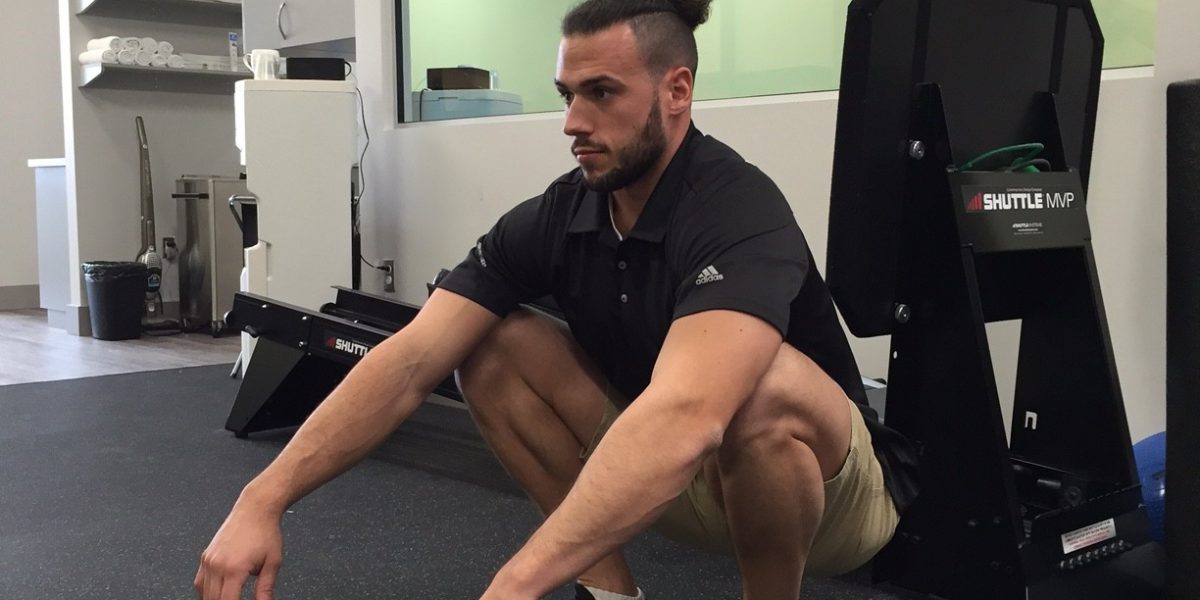The squat: a beautiful and (formerly) natural human movement – babies do it perfectly without ever being taught and somewhere between wearing diapers and becoming an adult we lose the ability to squat properly. The two biggest culprits: 1) Quantity of time spent sitting in chairs and 2) Not understanding the significant physical benefits of being to squat properly and of doing squats regularly. This article aims to shed some light on the latter point – to demonstrate the profound effects that mastering the squat can have on the health of your body.
A full depth squat done properly is more than simply an exercise, its a powerful movement pattern that demonstrates both movement efficiency and range of motion in the lower body joints. When was the last time you did a full depth squat with your hips going lower than your knees? The majority of people can’t even remember the last time they did a deep squat because in our society of convenience, sitting in chairs has eliminated the need to include a full depth squat as part of our daily collection of positions. The line “use it or lose it” applies well here. Without exposing your body to the full squat position we quickly lose the requisite range of motion and motor patterning needed to get there.
In terms of movements, the squat is King. If you want one single movement to practice that provides the most widespread effects of increasing strength, ingraining good movement patterns and making you more resistant to injury it’s the squat. A perfect bodyweight squat commands significant requirements from both our software (the brain telling the body what to do) and hardware (muscle strength and joint mobility). A full depth bodyweight squat is a demonstration of full human range of motion at the ankle, knee and hip and it involves specific and proper motor patterning to lower your bodymass between your legs. When load is added, the squat gives the added benefit of ingraining the pattern of creating a rigid neutral spine while generating power from your hips (the powerhouses of the body). The kettlebell goblet squat pictured below is a great way to start loading the squat while also working on hip range to get into the bottom position.
When done right the squat is beautiful. When done wrong its harmful to your joints. When done with poor technique through multiple repetitions and with added load its disastrous to your body. When I ask patients if they do squats as part of their exercise routine, a common answer I get is: “squats hurt my knees so I don’t do them”, My reply: “squats don’t hurt your knees, the way YOU squat hurts your knees”. There’s a reason I ask every patient to do a squat as part of my assessment – a bodyweight squat tells me more in 3 seconds about how someone moves than any other movement.
Think about how many times you do some sort of squatting motion each day. Getting in and out of bed, the car, a chair, the toilet, picking something up, running (running = a series of shallow single leg squats). They might only be quarter or half squats but do it with poor form for years and before you know it you have some gnarly OA in your knee joint. The quickest way to change the way you feel and decrease pain is change the way you move. THE CHANGE IS IMMEDIATE.
Our society is one of instant gratification and from that stems the following thought process for many people: Squat hurts my knees? Must be something wrong with my knees – Ill just take some pills or get a cortisone injection, avoid squats and it will make things better. WRONG. Squat hurts your knees? How about changing the way you squat so that you stop grinding away your knee joint cartilage. The option of changing the way you move involves work and an effort to learn better movement patterns whereas the first option is much easier although it doesn’t address the actual problem causing your pain.
Poor patterns are hard to break and working to acquire the range of motion and the motor patterning necessary to squat properly will be hard work for a lot of people. Take some ownership over your body, find someone that can teach you how to squat properly, own it, work towards a perfect squat and once you get it – SQUAT OFTEN. Once your form is perfected you’ve earned the right to start adding weight (although you can reap the health benefits of squats without any added weight). Regular squats with appropriate load and perfect form is the best way (with deadlifts being a close second) to prevent injury and increase overall strength.
Get started by trying one yourself. In barefoot, feet hip width apart and relatively straight, squat down as far as you can keeping your shins and torso parallel and as vertical as you can. If you can’t (most people wont be able to do this) then find a physical therapist that squats regularly themselves and learn the most powerful movement that will keep you healthy as you age. It might only take one visit or maybe it takes a series visits every 2 weeks to work towards competency but learning to do it is guaranteed to increase your quality of life for the small price it costs to learn it. Replace anti-inflammatories and training through pain with improving the way you move.
IN SUMMARY:
-Humans are built to squat, work towards reclaiming your natural ability to perform the fundamental movement
-Most people lose the ability to squat because of: 1) sitting in chairs 2) being uninformed about the benefits of squatting properly and regularly
-Earn your right to load the squat by first mastering a bodyweight squat with perfect form for repeated reps
– Start resolving pain by changing the way you move instead of looking for temporary quick fixes
-Increase your quality of life and resiliency to injury with one simple movement: THE SQUAT – its a powerful movement – Learn it. Master it. Do it often
Hopefully the title of this article makes more sense now. Happy squatting
-Nick





